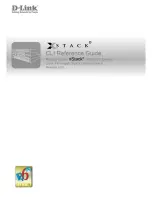
266
Feature Relationship
description
performs MAC-based access control
than the shutdown port action of the port intrusion
protection feature.
Configuring an Auth-Fail VLAN
Configuration prerequisites
•
Create the VLAN to be specified as the 802.1X Auth-Fail VLAN.
•
If the 802.1X-enabled port performs MAC-based access control, configure the port as a hybrid
port, enable MAC-based VLAN on the port, and assign the port to the Auth-Fail VLAN as an
untagged member.
Configuration guidelines
•
The 802.1X Auth-Fail VLANs on different ports can be different.
•
Assign different IDs to the port VLAN and the 802.1X Auth-Fail VLAN on a port, so the port can
correctly process VLAN tagged incoming traffic.
•
Use
when configuring multiple security features on a port.
Table 100 Relationships of the 802.1X Auth-Fail VLAN with other features
Feature Relationship
description
MAC authentication guest VLAN on a port that
performs MAC-based access control
The 802.1X Auth-Fail VLAN has a high priority.
Port intrusion protection on a port that
performs MAC-based access control
The 802.1X Auth-Fail VLAN function has higher
priority than the block MAC action, but it has lower
priority than the shutdown port action of the port
intrusion protection feature.
802.1X configuration examples
MAC-based 802.1X configuration example
Network requirements
As shown in
, the access device performs 802.1X authentication for users that connect to
port GigabitEthernet 1/0/1. Implement MAC-based access control on the port, so the logoff of one
user does not affect other online 802.1X users. Enable periodic re-authentication of online users on
the port, so that the server can periodically update the authorization information of the users.
Use RADIUS servers to perform authentication, authorization, and accounting for the 802.1X users.
If RADIUS accounting fails, the access device logs the user off. The RADIUS servers run CAMS or
IMC.
Configure the host at 10.1.1.1 as the primary authentication and secondary accounting servers, and
the host at 10.1.1.2 as the secondary authentication and primary accounting servers. Assign all
users to the ISP domain
test
.
Configure the shared key as
name
for packets between the access device and the authentication
server, and the shared key as
money
for packets between the access device and the accounting
server.
Exclude the ISP domain name from the username sent to the RADIUS servers.
Summary of Contents for FlexNetwork NJ5000
Page 12: ...x Index 440 ...
Page 39: ...27 Figure 16 Configuration complete ...
Page 67: ...55 Figure 47 Displaying the speed settings of ports ...
Page 78: ...66 Figure 59 Loopback test result ...
Page 158: ...146 Figure 156 Creating a static MAC address entry ...
Page 183: ...171 Figure 171 Configuring MSTP globally on Switch D ...
Page 243: ...231 Figure 237 IPv6 active route table ...
















































